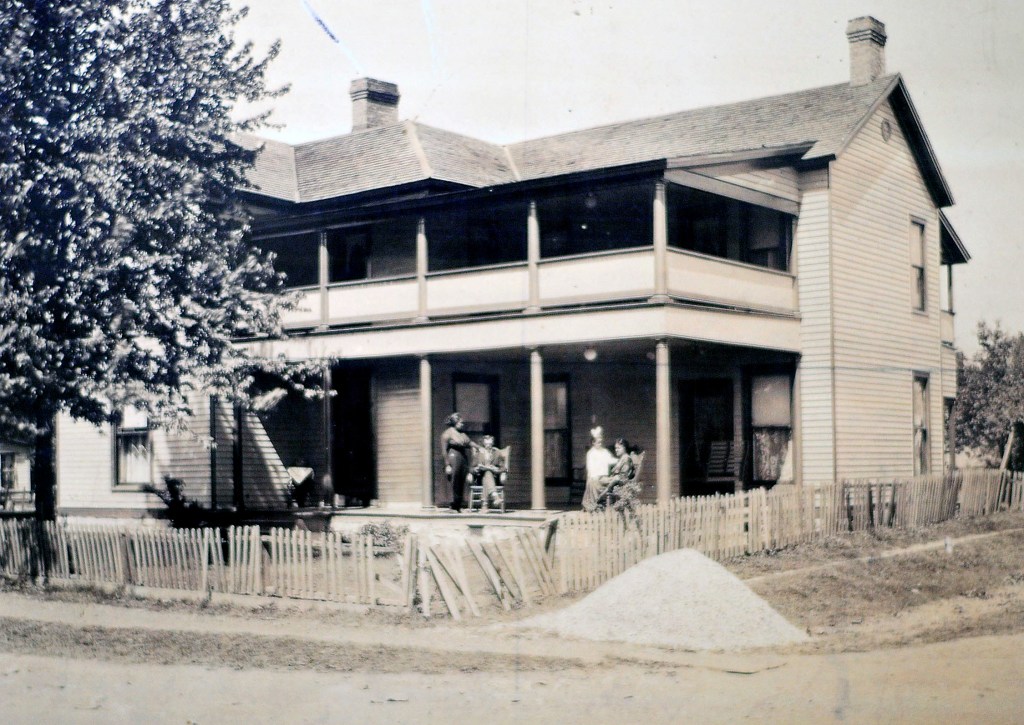Entertainer from BG among black pioneers
Published 1:46 pm Friday, September 14, 2012

- Sarah Loving's boarding house at 301 Chestnut Street. Many well-known people stayed there, including Cab Calloway. (Photo Courtesy of Lavinia Gatewood and the African American Museum/Bowling Green Area Museum)
At the turn of the 19th century and the beginning of the 20th century, a Bowling Green man inadvertently set a course for civil rights in New York City. He wasn’t a politician or a soldier. He was a dancer and singer.
Ernest Hogan, who lived at 309 Kentucky St., according to the 1910 census, was one of the first African-Americans to buy a home in New York’s Harlem neighborhood, and he was the first African-American to star in a Broadway production there, according to American National Biography online.
“In 1897 he was the comedy star and master of ceremonies of Black Patti’s Troubadours, for which he wrote some of the music and all of the comedy routines. The next year he played the leading role and edited the script of ‘Clorindy: or the Origin of the Cakewalk,’ the first African-American musical to appear in a Broadway theater,” the biography notes. “With music by noted composer Will Marion Cook and script by poet Paul Laurence Dunbar, it ran the entire summer season and was a major breakthrough for African Americans in show business.”
In an interview in Theater Arts’ September 1947 issue, Cook noted, “Negroes were at last on Broadway, and there to stay. … We were artists and we were going a long, long way. … Nothing could stop us, and nothing did for a decade.”
Hogan wasn’t his real name. Hogan was born Reuben Ernest Crowdus – as the Chicago Record-Herald reported in 1909 when he died – but by 1891, with several so-called minstrel shows under his belt, he embraced the name of Hogan “because the Irish were the most successful comedians of the time,” the biography notes.
Eventually arriving in the Big Apple, Hogan was described by poet James Weldon Johnson as “expansive, jolly, radiating infectious good humor, provoking laughter merely by the changing expressions of his mobile face.”
Pictures of Hogan show him wearing an oversized top hat and he has a big smile on his face.
In 1895, Hogan published his first tune, “La Pas Ma La,” and devised a dance step to go with it, the biography states. In 1896, he composed his trademark song, “All Coons Look Alike to Me,” which he wrote for the “Willow Jones” show, a Caucasian production.
According to the biography, the song was adapted from a song he had heard in a bar in Chicago and it would be years before the word “coon” was a racial slur. More than a million copies of the song were purchased, the biography notes.
Hogan, according to www.health-bytes.com, came up with the musical term “ragtime” in 1895. Hogan went on to star, write and organize more Broadway shows, then fell ill of tuberculosis in 1909 and died at the age of 44. He is buried in the Mount Moriah Cemetery in Bowling Green.
According to www.songfacts.
com, “All Coons Look Alike to Me” is discussed in Arnold Shaw’s 1986 monograph “Black Popular Music in America.”
“As Shaw points out,” the website notes, “the song ‘remains one of the justly famous examples of true ragtime’ and it did not embody the prejudicial stereotype implied by its title, but was a ‘ballad of a broken love affair in which a woman, now possessed of a new lover who spends money on her, airily dismisses her old love with the comment.’ ”
Researchers say the song sparked strong emotions in both African-Americans – who hated it – and Caucasians, who embraced it.
As the publisher of the song, Edward Marks, said, according to www.songfacts.com, “Whistled by a white man, it was construed as a personal insult.”
Stories such as those about Hogan or the establishment of the Shake Rag District in downtown Bowling Green, which was designated on the National Register of Historic Places list in 2000, are important to African-American youth, according to local minister.
Pastor Freddie L. Brown heads the State Street Baptist Church.
“The younger generation has not been educated on the history of the African-American community,” Brown said. Brown said the community within the community of Bowling Green “has a great spirit,” although work still needs to be done to provide better housing opportunities and employment for African-Americans in Bowling Green.
Saundra Ardrey, professor and chairwoman of the political science department at Western Kentucky University, said segregation forced the development of areas in the city just for African-Americans in Bowling Green. It would not be until the adoption of the 1964 Civil Rights Act and other legislation in the 1960s and 1970s that would lead the way to African-Americans seeking other retail, service industry and housing options outside the Shake Rag District.
“It (the Shake Rag District) was a refuge from a racist society,” Ardrey said. “The community allowed for black entrepreneurs and the establishment of barbershops, beauty parlors and banks.”
Even though Bowling Green is now home to many cultures, Ardrey said, it is still a border Southern state and some of the ideas of the past “still linger.”
Looking back at life in Bowling Green in the 1920s, Louise Twyman Suydam recalled one instance that puzzled her. She lived on 11th Street in the early ’20s and later moved to a house on State Street.
“All things were not bright and beautiful in Bowling Green,” she writes in a letter on file in the Kentucky Museum archives at Western Kentucky University. “A cross was burned on the lawn by the town fountain. The crowd was small and silent. I was not frightened; I was confused.
“A cross was the symbol of our Christian faith, so were these white robed men who burned it the heretics that Dr. Violet (of the Baptist church) had preached about? I was A.W.O.L. again and hoped I would be caught getting back so I could ask questions … As far as I know, that was the only Klan incident in our town, aside from the time they taught a lesson to a chronic wife beater. They roughed him up and made him the butt of town jokes, but he never again laid a rough hand on his wife.”






